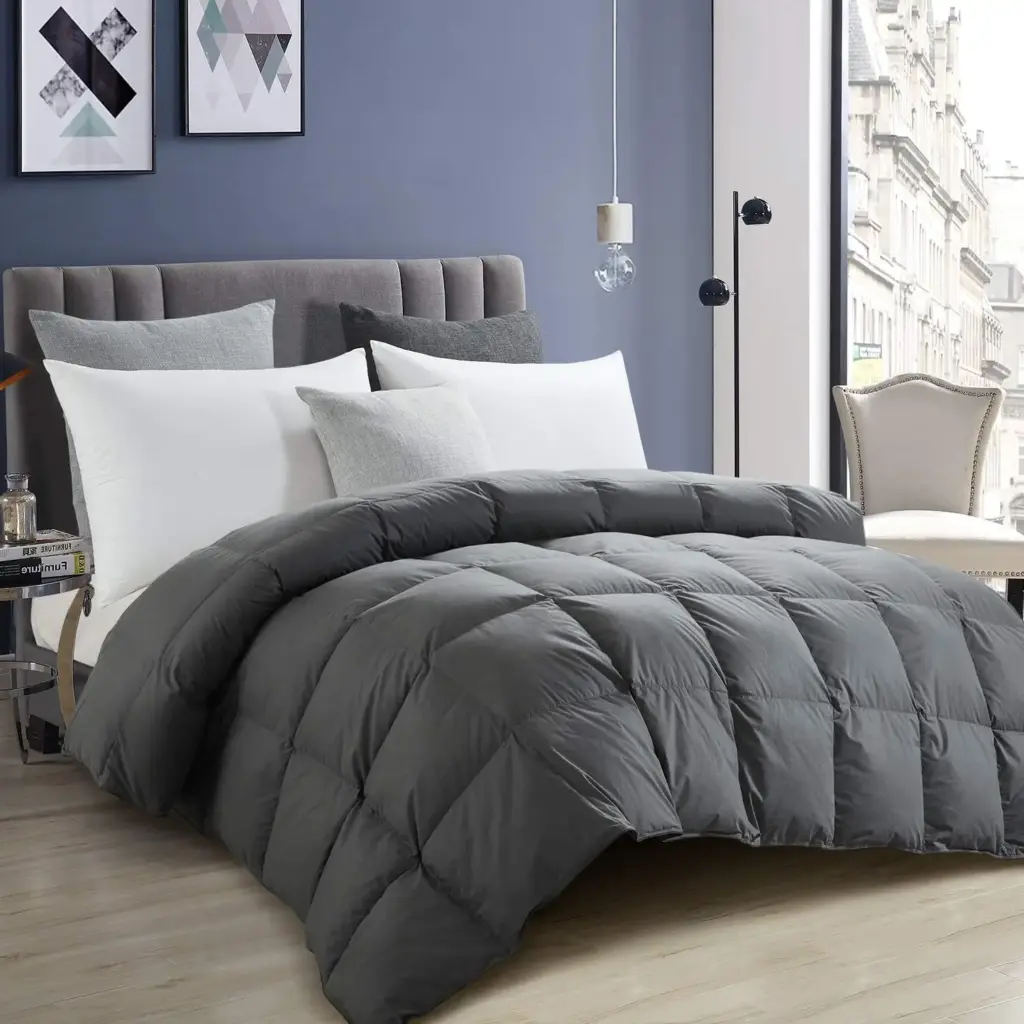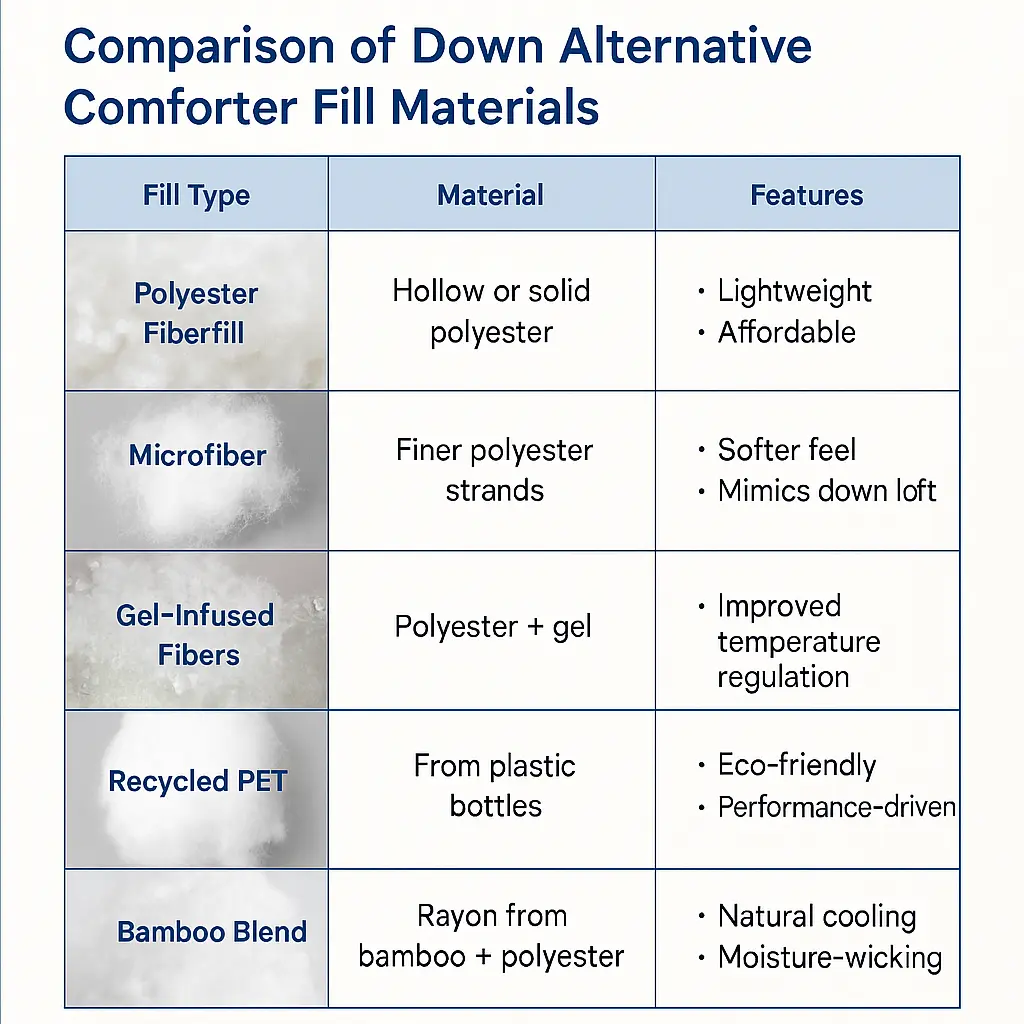A down alternative comforter is a popular bedding option that offers the warmth and loft of natural down—without the allergens, animal sourcing, or premium price. Whether you’re sourcing for a hospitality brand, building a sustainable product line, or shopping for comfort, down alternative comforters combine performance with peace of mind.
In this guide, we explore what makes a down alternative comforter unique, how it compares to traditional down, and how to choose the right fill material for your customers or product catalog.
What Is a Down Alternative Comforter?
A down alternative comforter is filled with synthetic or plant-based fibers designed to mimic the softness and insulating power of real goose or duck down. Unlike traditional down, it is:
- Hypoallergenic
- Animal-free
- More affordable
- Machine-washable
The outer shell is typically made from cotton, microfiber, or bamboo, while the fill material varies depending on performance needs and market positioning.
Common Fill Materials Used in Down Alternative Comforters
| Fill Type | Material | Features |
|---|---|---|
| Polyester Fiberfill | Hollow or solid polyester | Lightweight, affordable, durable |
| Microfiber Fill | Finer polyester strands | Softer hand feel, mimics down loft |
| Gel-Infused Fibers | Polyester blended with gel | Improved temperature regulation |
| Recycled PET (rPET) | From plastic bottles | Eco-friendly, performance-driven |
| Bamboo Blend Fill | Rayon from bamboo + polyester | Natural cooling, moisture-wicking |
Tip for B2B buyers: Look for OEKO-TEX® certified or Global Recycled Standard (GRS)–compliant fill for eco-conscious markets.

relation product:Soft Quilted Down Alternative Duvet
Key Benefits of Down Alternative Comforters
▸ Hypoallergenic
Ideal for those with allergies or asthma, as it resists dust mites, mold, and other allergens that natural down can harbor.
▸ Vegan & Cruelty-Free
Perfect for consumers seeking ethical and animal-free bedding options—no birds are harmed in the process.
▸ Machine Washable
Unlike many down comforters, most down alternative options can be safely washed and dried at home.
▸ All-Season Versatility
Available in various weights:
- Lightweight for summer
- Medium for all-season
- Heavyweight for cold climates or winter use
Some brands also offer dual-layer or reversible styles for flexible use.
Down vs. Down Alternative: A Comparison
| Feature | Natural Down | Down Alternative |
|---|---|---|
| Source | Goose or duck under-feathers | Synthetic or plant-based fibers |
| Warmth-to-Weight | High | Moderate to high (depending on fill) |
| Allergies | May cause reactions | Hypoallergenic |
| Price | Premium | More affordable |
| Care | Usually dry clean | Often machine washable |
| Ethics | Animal-based | Vegan/cruelty-free |

Ideal Use Cases
Down alternative comforters are suitable for:
- Hotels and hospitality (easy maintenance, hypoallergenic)
- College dorms & student housing (affordable, washable)
- Retail & DTC brands (eco/vegan segment, seasonal collections)
- OEM/ODM manufacturers targeting wellness or ethical sleep markets
For large-scale distribution, look for compressed packing, bulk MOQ flexibility, and brand label customization options.
What to Look for When Buying or Sourcing
- ✅ Fill Weight (GSM): 200–350 GSM for summer, 400–600 GSM for winter
- ✅ Shell Fabric: 100% cotton, microfiber, or bamboo for breathability
- ✅ Construction: Box stitching or baffle box design to prevent fill shifting
- ✅ Certifications: OEKO-TEX®, GRS, or ISO quality standards
- ✅ Labeling: Vegan, cruelty-free, or eco-friendly if targeting those segments
Conclusion
A down alternative comforter provides a comfortable, practical, and ethical sleep solution for both end-users and business buyers. With a wide range of fill materials, warmth levels, and price points, it remains a go-to option across global bedding markets.
Whether you’re shopping for your home, launching a sleep brand, or supplying a hotel chain, down alternative comforters deliver value without compromise.


Leave a Reply